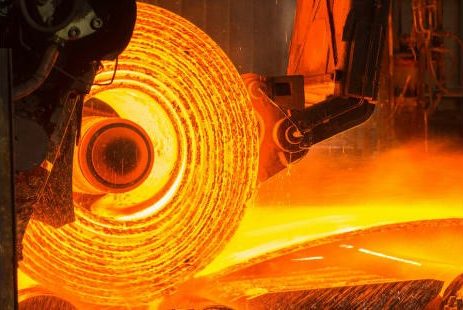Steelmaking is responsible for up to 9% of global greenhouse gas emissions and must decarbonize if the world is going to stabilize temperature rise to 1.5°C in line with the Paris Agreement. This raises serious economic and environmental questions for Australia, as the steel industry’s largest supplier of raw materials like iron ore and coal.
The report, Forging Futures: Changing the Nature of Iron and Steel Production, assessed different pathways for Australia to support the decarbonization of steelmaking in the Asia-Pacific, which is home to nine of the world’s ten largest steel producers. It found that developing Australia’s green iron manufacturing capacity, producing iron with renewable hydrogen, and exporting it to countries like Japan and Korea for steelmaking was the most economically competitive option for Australia.
“Exporting green iron is Australia’s natural sweet spot. Our massive iron ore reserves, renewable energy and green hydrogen potential, and proximity to Asian markets gives us a competitive advantage over other prospective exporters,” said Georgine Roodenrys, partner at Deloitte Australia.
Other pathways analyzed for the report, such as exporting green hydrogen and iron ore, and gas-based iron production, were either too expensive or unviable.
The report also assessed the impact of each pathway on Australia’s natural environment. Green iron manufacturing was again shown to be the best option, as it is not only the lowest emission pathway but also makes more land available for dual purposes.
However, there are implications for Australia’s environment and First Nations communities that need to be considered. WWF-Australia’s industry decarbonization manager (steel), Nicole Wyche, said specific protections and incentives are needed to preserve nature and promote regeneration throughout the lifecycle of mining and industrial activities.
Manufacturing green iron has the potential to deliver between $96 billion and $295 billion per year to Australia’s economy. To unlock this opportunity, the report calls for the Australian Government to increase the pace of renewable energy deployment, provide incentives for early mover green iron projects, ensure Australia is a strategic partner of choice with trading partners, and support the introduction of a carbon price for the Asia–Pacific region.
WWF-Australia welcomed the federal government’s recent announcement of a $1 billion Green Iron Investment Fund as an important step, but more investment is needed to secure Australia’s economic future in a decarbonizing world.
“At the current pace, it would take over 100 years to deploy the necessary renewables to replace 10% of Asian steelmaking with green iron. Australia needs to accelerate the deployment of renewables and establish pragmatic policies that support both economic and environmental goals. By fostering partnerships with Asia-Pacific trading partners and aligning on high integrity standards, Australia can solidify its position as a leading supplier of green iron and drive global steel decarbonization efforts,” said Georgine Roodenrys.
“With fast action and smart investments, Australia can be the key that transforms Asia’s steel industry and construction sector. This is a chance to future proof our largest industries and economy as decarbonization policy, carbon pricing, and emissions regulation place ever shortening horizons on fossil fuel usage,” added Nicole Wyche.

